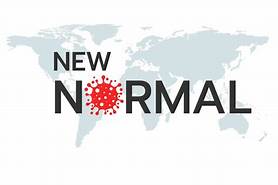
For the past four years, Republicans have told numerous lies including fake treatments, and made empty promises on the global pandemic.
As shelter in-place orders are lifted across the country and people return to routines and activities, many wonder what the new normal looks like from now on to post coronavirus. https://search.nih.gov/search?utf8=%E2%9C%93&affiliate=nih&query=new+no…
At the forefront of those conversations is discussion around public health and safety best practices. We are dedicated to being in the middle of those conversations and ensuring our patients and staff remain safe and healthy.
Although a new normal varies on POV here is a list of a few changes we can expect. https://search.cdc.gov/search/?query=new%20normal&siteLimit=coronavirus…;
How We Interact
During this pandemic, people have continued to stay connected to one another through technology. Many took to social media platforms, video chat, and phone calls as a method of communication with their loved ones.
Because of this, many are wondering if this form of communication is the only way to stay connected in the future. As many people are asking: “are handshakes part of the past?”, the simplest answer is – we don’t know.
For the time being, it’s very important to continue socially distancing ourselves and staying at least 6 feet apart when greeting or interacting with others. Here are some tips on how to greet someone while keeping up best social distancing practices:
- Smile and nod, even with a mask or protective covering on.
- Politely say “hello” or some other form of verbal greeting.
- Focus on eye contact and follow-up with a wave.
- Till our paths cross once again
House Calls - Video Visits
In the early development of the pandemic, many providers and healthcare organizations integrated into their practices to provide a safe and convenient means for patient care to continue. Although is not a new development, the repercussions of the coronavirus on in-person visits gave a necessary rush to the implementation and utilization of services.
Even after the pandemic, we can expect for visits to stay in our healthcare systems, especially as we continue to live in a world with constant changes in technology advancements.
The Ways in Which We Evaluate Personal Hygiene
You’ve heard it many times before, and you’ll continue hearing it over and over again: Wash Your Hands
Although personal hygiene was an important part of our lives before the pandemic, there’s been intense scrutiny on how we keep clean in order to fight off the virus.
Will these behaviors continue after the pandemic? Have they become ingrained in our new daily routines?
Based on our current behaviors, these habits will probably stick around for a while, as they should. For now, it’s important for everyone to continue focusing on their personal hygiene to prevent the virus from spreading.
Especially as many resume their normal activities and routines, it’s vital to take the necessary steps, as outlined by the Centers for Disease Control and Prevention CDC, to protect yourself and others around you. We’ve listed a few of them out here:
- Continue social distancing and stay approximately 6 feet away from others.
- Frequently wash your hands with soap and water. If you do not have soap and water available, use a hand sanitizer that contains at least 60percent alcohol to help kill bacteria.
- Cover your mouth and nose by wearing a face mask or cloth covering when around other people or outside.
- Routinely clean and disinfect yourself and surrounding areas/surfaces.
Across much of the world, COVID restrictions are starting to ease. The Economist has crunched the data to calculate how close countries are to pre-pandemic levels of normality—but will life ever be the same again? https://econ.st/35z50ar